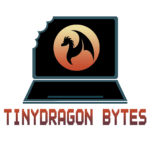At its most basic level, content strategy is the creation and management of content. While the approach to content strategy was certainly changed with the growth of internet capabilities, the core of what it is hasn’t changed: create content that is sustainable, meaningful, cohesive, and ultimately engages the audience. Regarding the approach you may use for your own content strategy, perhaps the most important question to be asking is; “Why?”
The Content Marketing Institute Blog states that content strategy: “… helps you get the right content in front of the right people, at the right times, for the right reasons.”
While the US Government’s User Interface and Usability Office says that content strategy is “The strategic planning, creation, delivery, and governance of your content.”
The wonderful thing about these statements is that they are both correct! Good content strategy should be agile and able to fit into the needs you require it to fit in without feeling strained or out of place.
The content you’ll find on Ikea’s website is going to be vastly different from the content you’ll find at Indeed.com. They both want visitors to go to their sites, but the audience for those sites is going to be very different.
Brain Traffic provides the Content Strategy Quad as a way to look at and understand content strategy. They say that content strategy breaks down into four primary components: Editorial, Experience, Structure, and Process. Without any of these, content strategy will ultimately fail.
The quad is more than just a list. Each part contains its own separate questions that need to be answered and steps to be taken. What makes Brain Traffic’s take on it different than many of the others is that it allows you to take the reins and create your own approach.
Editorial Strategy breaks down into a series of basic questions that will help formulate the direction the rest of the content will move toward. A few of these questions are:
Figuring out the answers to these questions will ultimately help you narrow your audience down to those who may be seeking your content. Once you have those answers outlined, you can start writing the content itself. Even before the content has been completely written, the next step can begin as some of the above questions will help to form ideas around the experience the consumers of your content will have.
As the content is being compiled into an easily consumable copy, the experience design must then make that content appealing to the core audience they are attempting to reach. Important questions that will need to be asked include:
It’s the answer to the first question that will guide how the following questions are answered and how the experience is ultimately built. Ultimately, you want the experience to be one that speaks not only to your audience, but to those who may find you along the way. The experience needs to have its own level of engagement beyond the content created during the editorial process.
Structure ties into Experience Design and Editorial Strategy in that it creates the underlying support that everything else will be built on top of. When structure is discussed, it’s often done so with a plan to help draw in users that will benefit from the content. Some of the important questions that need to be asked during this phase include:
When writing or creating content, it’s always important to consider its use for the future. That way it’s not something that will only be seen once by your audience and forgotten, but something that can be called on in the future to enhance other content where it seems appropriate.
This is the section of the quad where everything is planned out. How the pieces will be built, framed, and ultimately constructed. During this process, there will be questions like these:
In the end, the processes you use to create your content will look quite different from how somebody else develops their content strategy, even if both of you are staying within the quad structure. This is due to the quad structure being infinitely flexible to be able to help a car manufacturer sell more cars and an accounting firm disseminate important information about Tax Law changes to their clients.
A heavy focus on Content Strategy will bring you results, help your business grow, and provide valuable information to your preferred audience.

creating digital + strategic experiences to move brand forward
© 2022 Tinydragon Bytes. All rights reserved.